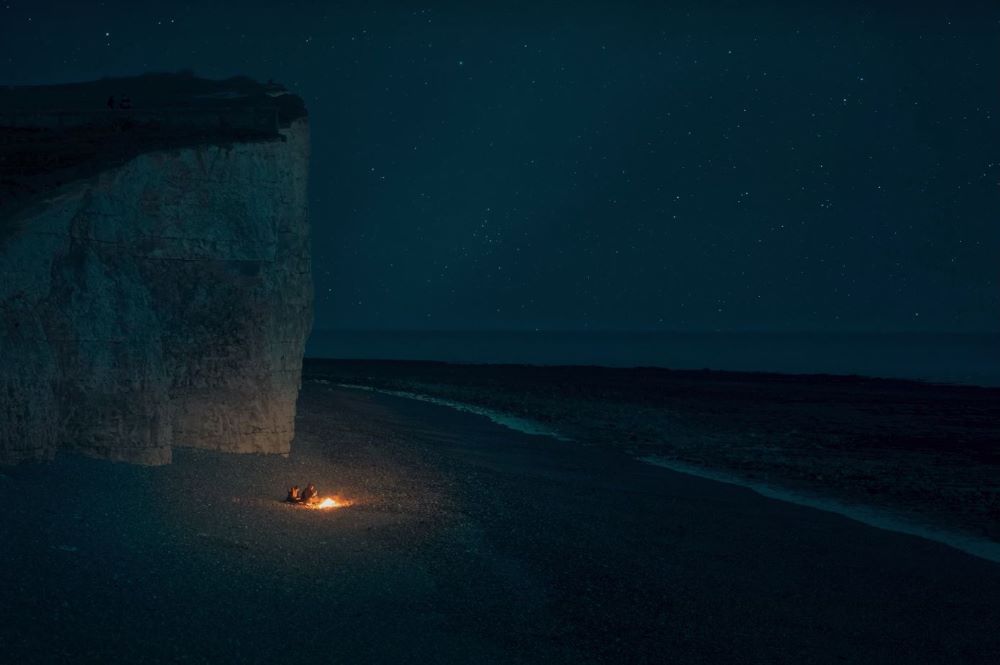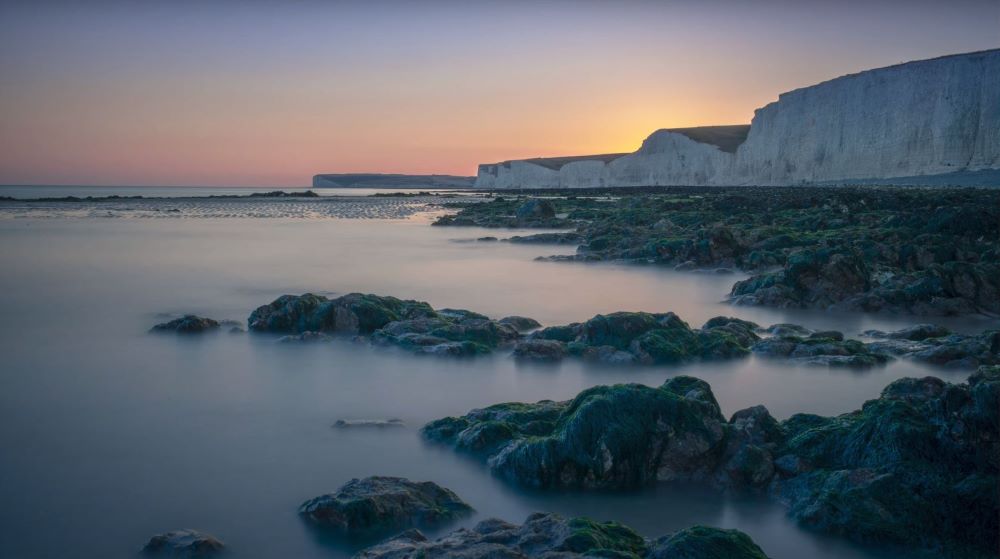- Call us: 01444 237070
- Contact Us
- Stores
- Sign In / Register
-
- Back
- Used Cameras
- Used Accessories
- Used Lenses
- Used Video
- Used Film Equipment
- Used Stock Alert
- Used Blank Test
- Sell or Part Exchange
- Used Clearance
- Recently Added Used Equipment
- Park Picks
- All Used Black Friday Deals
- Faulty
- Used Week Offers
- Back
- Trade-In
- Blog
- New in
- Call us
- Contact us
- Stores
- Sign in
- Categories
- Tips & Inspiration
- Reviews
- News
- Events
- Features
- Buying Guides
- Competitions
How to Build Beautiful Landscape Photos
Landscape photography is one of the most popular genres of photography. It’s easily accessible, and there is an abundance of places all across the country that reward those willing to give it a go.
How to Compose your Landscape Photography Video Tips | Tutorial Tuesday
The real skill in landscape photography comes from condensing such a wide scene into a photograph. Since not every beautiful landscape immediately translates to a beautiful photo, the art requires an expert compositional touch.
Today, we’ll be looking at our top landscape photography tips to help you rethink your approach to your landscape photography composition, so you can leave shoots with photos that you’re proud of!
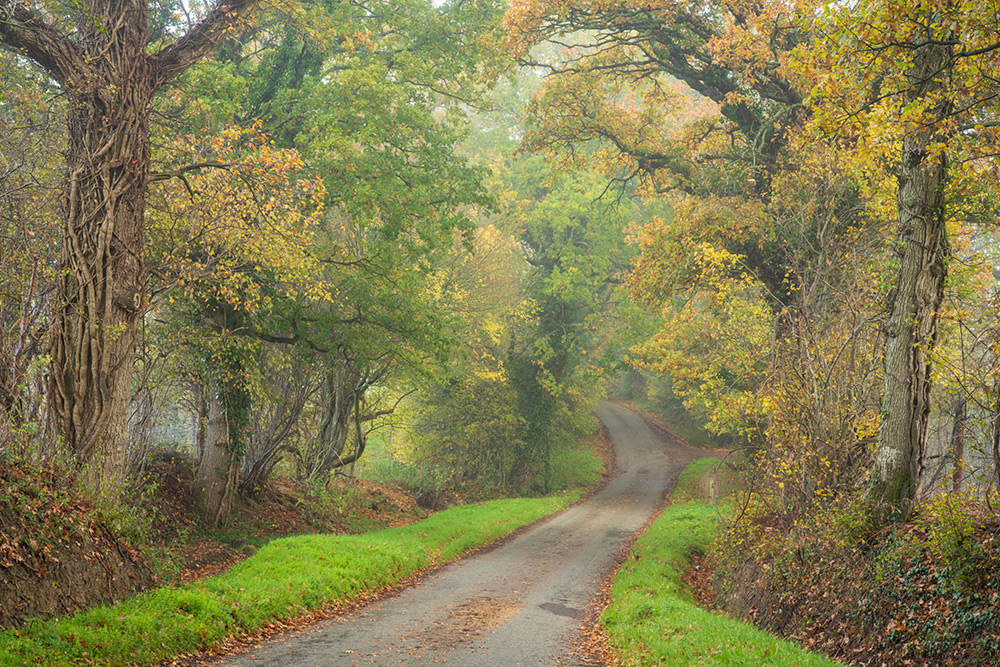
Photo © Nick Dautlich Autumn Road In Sussex
Take in the Landscape
Before even considering taking photos, immersing yourself in the outside world should be a priority, as it’s simply a healthy, revitalising thing to do. This is landscape photography’s greatest appeal – shoots aren’t memorable because of their results, but because of the feeling of being outside in a gorgeous landscape. Your photos should capture those feelings; mainly for your enjoyment, but to share with others, too.
While this is a pleasant thing to do, it will also improve your landscape photography results. Spending the first few minutes of your shoot becoming absorbed in the landscapes helps you to familiarise yourself with the scene. Not taking the time to select your shot carefully often introduces tunnel vision, and frequently results in shots that aren’t as satisfying. It also means that, even if your shots are perfect, they hold far less emotional weight when you come to revisit them in the future.
Especially as we’re starting out taking landscape photos, the problem arises that we don’t see the world in pictures. As something that doesn’t come naturally, you need to treat your time spent looking at the landscape just as importantly as your work with the camera. To begin to see compositions spring up, you should take as much time as you need absorbing your surroundings and finding those pictures to work with.
If you’re not taking a mindful approach to landscape photography, your compositions will suffer as you won’t identify the best way to tackle the view in front of you. This creates a cycle of disappointment almost – you leave with results that you’re potentially not as satisfied with, and you don’t have the benefits of truly enjoying the experience to take away either.

Build around a Subject
One of your primary aims when assessing your landscape is to decide what’s important. An essential skill of a strong landscape photographer is picking out the essence of the composition – breaking the scene down can help with the problem of condensing a boundless landscape into a rectangular window.
The best way to do this is to identify the most important point of interest of the picture you want to capture; in other words, the subject. In most landscapes, you can only make sense of the abundance of surrounding elements once you’ve defined the focal point; otherwise, you run the risk of becoming overwhelmed. Landscapes have such a tendency to wide interpretation, which is both a blessing and a curse!
Beach camp fire by Gareth Evans
The subject may not be immediately obvious. While sometimes, the subject is an eye-catching object in your scene, a landscape has plenty of other elements which may define the shot. These are much more abstract – it could be a patch of light, the formation of the clouds, or simply the weather that day. Anything in your scene that’s a feasible point of interest is worth selecting, leaving room for what you want to capture.
In exploring the elements that stand out as you observe the landscape; you’re likely to find the perfect subject for your photo. The subject behaves as the natural resting place for your viewer’s eye. Around this, you can then introduce all the other elements of your shot to define your composition – having an anchor point around which your photo is composed results in a considered, appealing image.
Every subject in a landscape photo has supporting elements that make up the substance of your composition. These influence how you choose to compose – any element can influence your choice of framing, space, settings, angle, perspective and more.
Selecting Angles
Your camera angle can define the impact of the elements in your scene, and which ones take precedence. This is especially important to keep in mind after having selected a subject in your scene and judging how you want it to relate to the landscape features surrounding it.
For instance, if you’re focusing on the sky, it’s a good idea to take an upwards angle. However, this requires balance. Consider what would happen if you had an angle that was too sharp – the sky would take up too much of the shot and you’d lose the valuable sense of scale that gives the subject impact. This is the same for more tangible subjects like distant land features – you must take an angle that positions your subject so that the surrounding elements can combine to make sense of it. This is vital for condensing a landscape view into an image.
The angle at which you photograph the landscape also impacts the impression you leave on the viewer. A lower angle pointing upwards creates a sense of immersion as if they were in the scene; however, shooting downwards from a higher place enables you to emphasise the scale of your landscape and illustrate an entire view.
Keeping your perspective unique and considering its impact can be a make-or-break with your composition, so choose wisely!
Beach long exposure by Gareth Evans
Judging from Context
After identifying the subject and its supporting parts, your intuitive approach to composition comes into play. Judging the right choices from the context is the most important skill in landscape photography, and separates good photos from great photos.
More technically, making effective compositional decisions requires an intuitive ability to weigh up how the elements in the landscape counteract each other.
Part of this involves taking what you know about the elements of the shot and tying them all together using tried-and-tested compositional techniques. In almost all scenarios, there will be a way to deploy a strategy like incorporating leading lines or the rule of thirds; it’s simply up to you to deploy it in the right place using your intuition.
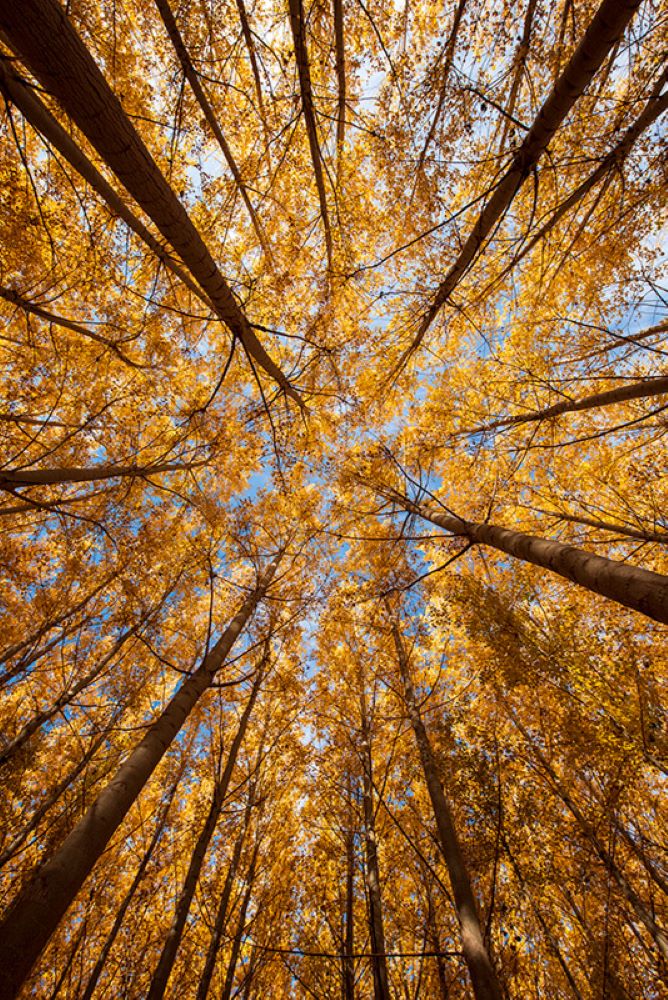
Looking up into trees © Nick Dautlich
Landscape photography is unique as it’s almost impossible to take the same photo twice. The conditions on the day will invariably be completely different, so there’s no approach to a landscape that works every single time. It demands intuition, preparation and a little bit of luck from the photographer, which makes it so rewarding.
Therefore, you should let your composition be judged by the conditions. Remember that good photos tell stories – the key is to emphasise your impression of the landscape based on the feelings that immediately stood out to you.
Judging from context also requires you to explore new options on each shoot. Approaching a certain spot with an idea of what you aim to shoot limits the range of landscape photos you could come away with, interfering with your problem-solving brain. This ‘problem-solving brain’ needs to have the right mindset to discover what the best shot at the time is, and this is only possible by taking into account not only your compositional techniques but also the insight described above.

Compositional rules for landscapes
All areas of photography require a comfortable understanding of common compositional techniques. While this article is more focused on the mindset towards producing a beautiful landscape photo, it’s worth considering the tricks that can benefit all scenes – knowing to look for these and lean into them is an essential part of becoming a fluent landscape photographer.
- Rule of thirds: This one needs very little introduction. After a point, using it becomes natural to a photographer, since the lines and intersections between thirds make the ratios between elements natural and balanced. It’s useful, but it’s worth avoiding shoehorning it into every photo!
- Leading lines: this ties in hugely with identifying your subject. Having your entire landscape line up towards a point of focus is rarely ever immediately obvious – if you can find a setup like this, your photos will be compelling as a result.
- Negative space: Using negative space involves ensuring that the area around your subject influences the atmosphere of the photo. You can easily achieve this by considering depth of field and identifying secondary points of interest.
- Vanishing points: This involves finding a place where the lines in your composition appear to converge, leaning into the power of perspective. (Bonus points if you can position your vanishing points on any of the intersections between thirds!)
- Symmetry: With the right application, this can make for an immediately compelling and considered composition.
- Framing: This works best when you have a distinct subject in your shot, where you can combine the elements surrounding it to lead the viewer’s eye naturally towards it and provide it with an interesting border of negative space.
Focal length and composition
Your choice of lens is crucial when approaching a landscape. The focal length of your lens dictates how much of the landscape you’ll be able to shoot.
For the most part, landscape photography is mostly associated with wider lenses. A 24mm prime lens is a common choice, as it maximises image quality whilst having a focal length that most photographers are consistently comfortable working with. For the most part, these primes are significantly lighter than zoom lenses too, which is always helpful on shoots. A 35mm lens is another popular choice, as it feels incredibly intuitive to use for landscape photography.
Some landscape photographers like to take their lenses even wider, with standard ultra-wide focal lengths like 16mm and 18mm. While they result in the landscape being quite stretched towards the corners, they do capture as much of a vista as possible.
This isn’t to say that much longer lenses can’t be used, either – they compress the scene and create an awe-inspiring sense of scale. They work brilliantly for honing in on a subject, and the background behind it can become equally imposing.
Since composing a landscape photo requires a versatile touch, virtually all landscape photographers will have a useful zoom lens in their bag. The standard 24-70mm lens covers the essential focal lengths; however, some lenses extend longer for those looking to shoot some telephoto landscape photography. Furthermore, some zoom lenses take the focal length closer to the ultra-wide end of the spectrum, like the Sigma 14-24mm f/2.8 DG DN Art Lens. All-in-one lenses are seeing an uptick in popularity too, like Nikon’s outrageous Z 28-400mm f/4-8 VR.
If you’re looking to discover the best lens for landscape photography, you can check out our buying guide all about the topic on our blog.
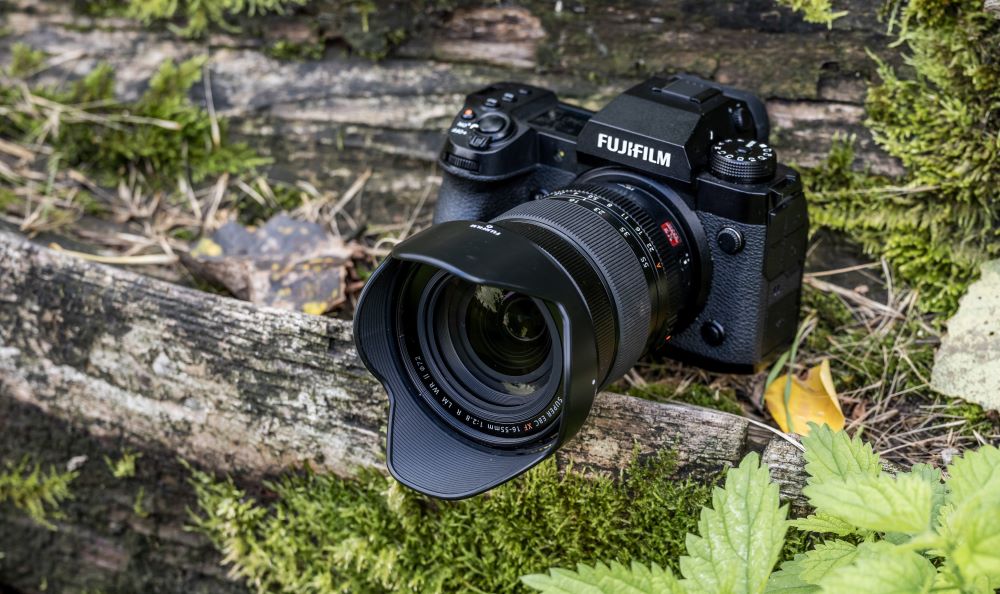
Fujifilm XF 16-55mm f/2.8 R LM WR II
Lens Filters
Using camera lens filters can have a massive impact on your landscape photography. Controlling certain aspects of your photo can completely change your composition, and inform your decision-making too.
For instance, using a neutral density filter completely changes how you approach exposure. In harsh lighting conditions, a graduated ND filter can solve dynamic range issues in the sky by blocking out the light in the top half of your photo. This enables shooting contre-jour and can open the door to interesting shots that would be much more challenging to take without, letting you take creative control.
ND filters are also essential for long-exposure landscape photography. By decreasing the light that passes into your camera, you’re free to extend your shutter speed as much as you like. With filters like the LEE Big Stopper which blocks out 10 stops of light, any landscape condition can be approached with a long exposure, allowing you to access a whole world of beautiful landscape photos (the classic ethereal look of blurred water comes to mind!).
Some filters serve to enhance your general photography experience, and can also assist with your landscapes too. Circular polarisers give photographers control over the saturation in their scenes and also soften reflections and glare.
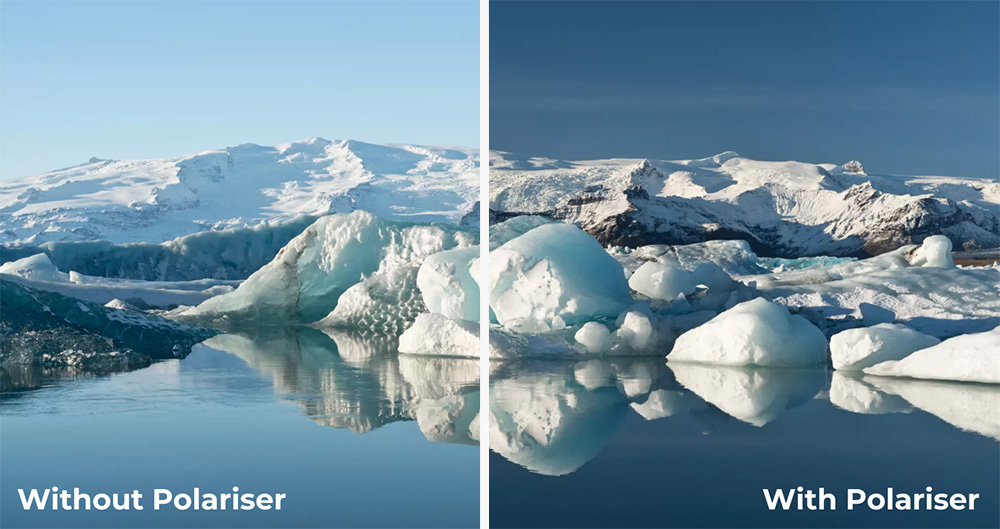
The filters mentioned above will help you convey your photo’s theme and feeling precisely. If you want to take this idea of creative control even further, consider exploring some creative filters. For instance, the LEE Filters 100mm Landscape Set will help you lean into glowing sunsets and bring some saturation into the dullest of skies with its colourful graduated filters.
Filters are usually screw-in, drop-in or magnetic. Classic choices like the Cokin lens filter system involve drop-in filter holders, which is often a much more accessible way to start using them. However, magnetic lens filters have become very popular in recent years from brands like Urth and Kase, with the latter providing a 100mm Armour Entry Kit magnetic system with all the filters you’ll need to get started.
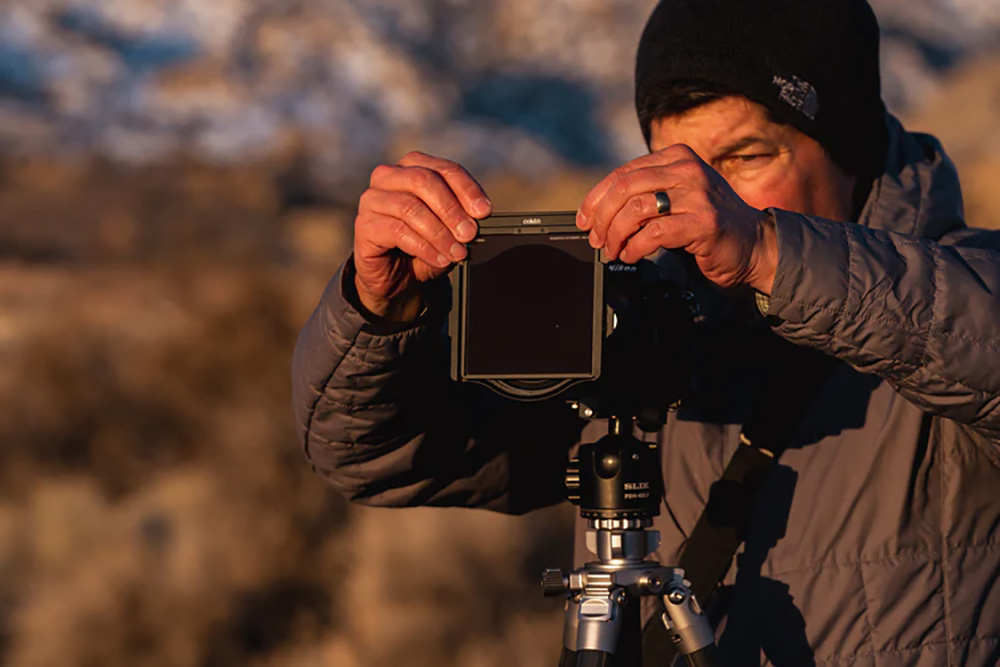
We hope this article has inspired you to take new approaches to your landscape photography composition, and given you the tools to tackle any landscape you come across. If you’re looking to read more about ways to enhance your landscape photography, explore the Park Cameras blog for camera reviews, buying guides, and tips and inspiration pieces just like this one.
Discover our range of digital cameras, lenses and more for the perfect accompaniment on your photography journey.
Share this post:
By Thom Pyle on 23/10/2024

Trade in your old equipment
Fast and easy trade in service ensures your old gear is collected efficiently and you are paid quickly! It's very simple to trade in your unwanted photography gear. Just head over to our dedicated Sell or Part Exchange page, fill out the details, and we'll get back to you with an offer for your old gear. Take the cash, or put it towards the cost of your new gear. It's up to you! Find out more
sign up to the newsletter
Keep up to date on the latest photography news, events and offers. Sign up now

